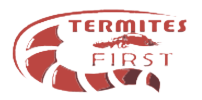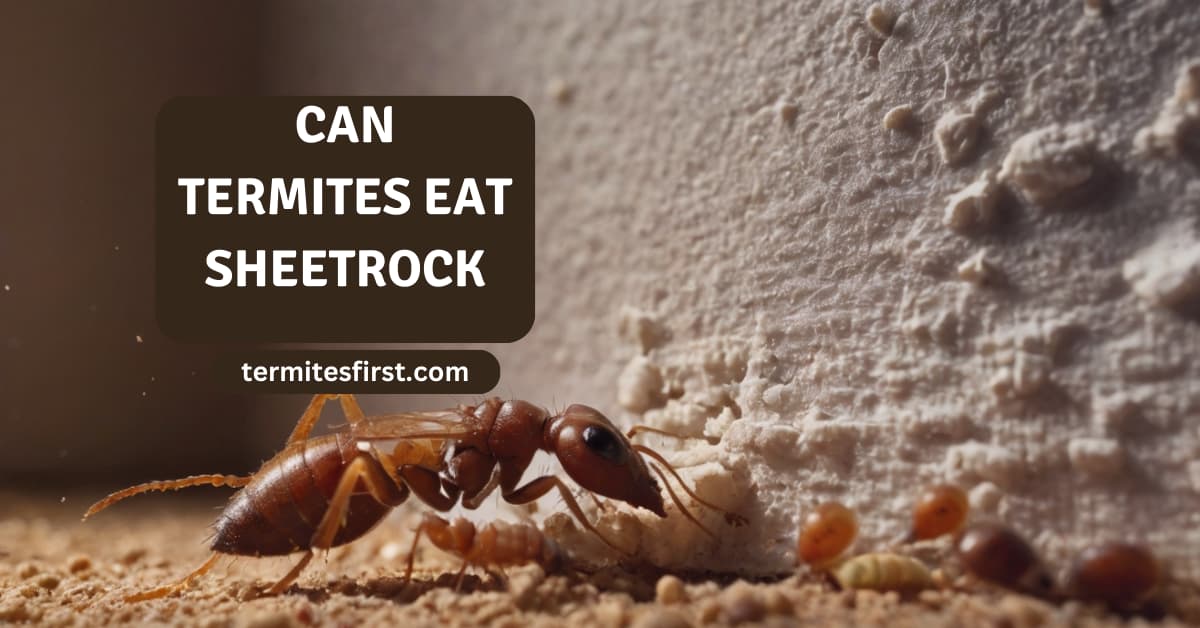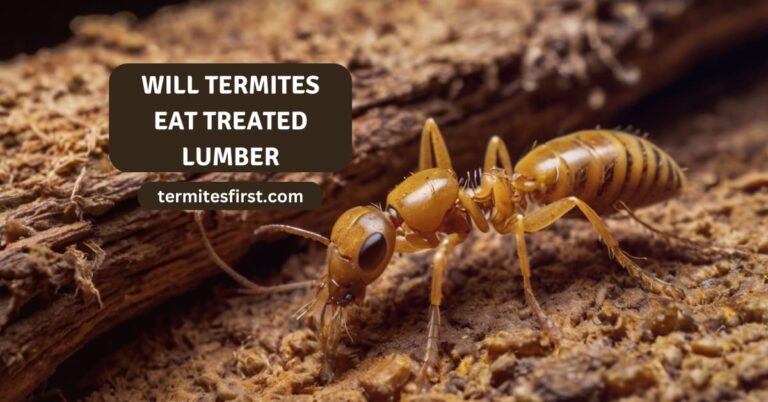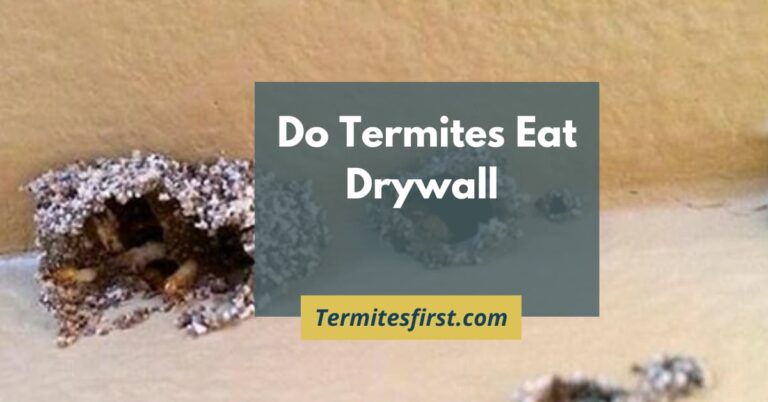Can Termites Eat Sheetrock?
Yes, termites can eat sheetrock, which is alarming to homeowners. Sheetrock, the stuff that lines most of our walls, is basically gypsum in between two sheets of paper. Termites are drawn to the paper because it is made from cellulose, their favorite food.
By knowing which risks increase your chances of a termite infestation, you can take proactive steps to protect your home from termites. That’s why consistent inspections and treatments are so important to keeping termites at bay. Keeping them in check prevents them from compromising your home’s structural integrity.
Main Insights:
- Since termites only eat cellulose materials, such as in sheetrock, damage can occur quickly if an infestation is allowed to go untreated. Follow up with regular inspections to detect the first signs of termite activity.
- Sheetrock is particularly susceptible to termites because of its paper backing that contains cellulose. Preventing moisture intrusion and using termite-resistant building materials in new construction are effective risk mitigation strategies.
- Subterranean and drywood termites are the most prevalent species capable of damaging walls. Each species of termite has its own unique behaviors and telltale signs of infestation that are essential for identification and detection.
- Spotting termite damage in drywall includes signs of discoloration, bubbling paint, mud tubes, and odd noises. By keeping an eye on these indicators, you may be able to catch them early.
- Undetected termite damage can cause sagging structural integrity, extensive damage costs, and loss of property value. Taking care of termite issues quickly is important to ensure security and protection of your investments.
- Best practices for repairing termite-damaged sheetrock are to measure the amount of damage, cut out the affected areas, and replace with fresh drywall. For large infestations, it is advisable to seek professional pest control services.
Can Termites Damage Sheetrock?
Termites will eat through sheetrock, targeting the paper backing that contains cellulose, which is their favorite lunch! This insatiable appetite results in costly damage as they consume the wooden structure behind the drywall. The prospect of significant damage is frightening, especially since termites can operate undetected for years, silently eating away at the walls’ structural integrity. They often create small holes and tunnels as they feed, leaving behind evidence of their presence.
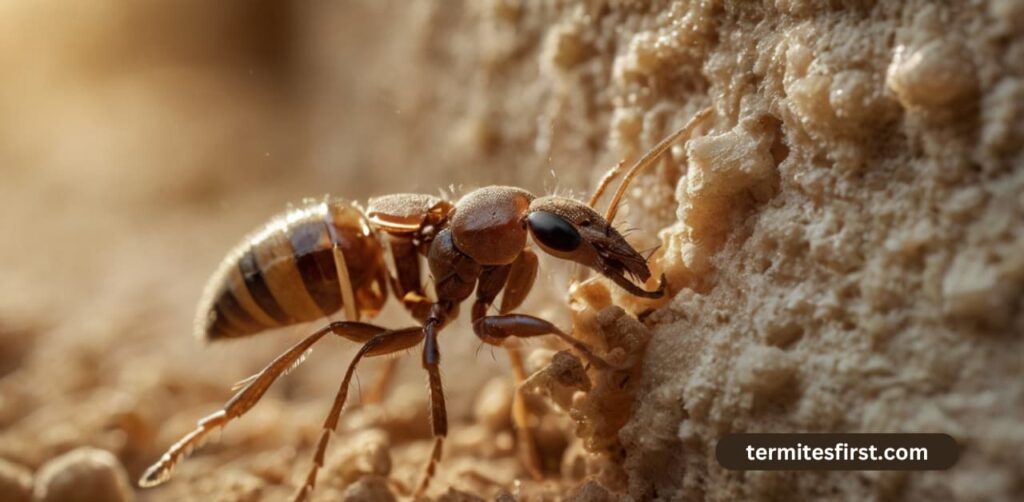
Each year, around 600,000 homes in the United States contend with possible termite infestations, leading to serious structural and aesthetic damage. This damage costs American homeowners an estimated $5 billion per year. To prevent a termite problem, routine inspections by a qualified termite control provider are essential to catch termite activity while it’s still small and prevent costly repairs.
Regular termite inspections are crucial for homeowners to protect their investments. By identifying termite colonies early, homeowners can avoid extensive damage and the high costs associated with repairs. Engaging a termite pro for a free termite inspection can help ensure the integrity of your home is maintained, safeguarding it against these destructive pests.
1. Termite Feeding Behavior
Termites have an insatiable hunger for cellulose, motivating them to search for materials high in this compound. This destructive feeding habit is made possible by powerful symbiotic microorganisms that live in their gut, allowing them to effectively digest cellulose.
Worker termites are the hardest workers in the insect kingdom, endlessly feeding and chewing through wood in their search for food sources. Unlike inorganic materials like plastic or concrete, which termites will bypass, they sharpen in on organic materials. Termites never sleep and can cause damage 24/7.
Even a small colony of only 2,000 termites can eat about 11 pounds of material per month. That’s why it’s so important to address infestations as soon as possible!
2. Vulnerability of Sheetrock
Sheetrock is especially susceptible because its paper backing has cellulose embedded in it. This makes it an especially tempting target for termites. Additionally, moisture increases the likelihood of infestations, since damp conditions provide the perfect environment for termites to flourish.
Hollow wall studs and other wooden framing provide quick access points. This entrance gives them easy access to invade and infest throughout the walls. To address this threat, building with termite-resistant materials when constructing or renovating is a smart move.
Taking such proactive measures can protect homes from future costly termite damage.
3. Common Termite Species Affecting Walls
The two most common termite species that are able to damage sheetrock include subterranean termites and drywood termites. Subterranean termites are known for their large colonies and affinity for moisture, which makes them the most destructive.
They can voraciously consume drywall paper and wood, leading to extensive structural wall damage. On the flip side, drywood termites don’t need contact with soil and can infest completely dry wood structures.
Each species has specific behaviors, nesting habits, and feeding preferences, which can affect how and when an infestation is discovered. Subterranean termites frequently build mud tubes to indicate their presence to the outside world.
In contrast, drywood termites are more likely to produce frass. Learning these differences is the key to spotting and treating an infestation quickly and effectively.
Identifying Termite Damage in Drywall
When checking drywall for termite damage, signs of possible termite infestations can guide you.
- Discoloration and stains
- Bubbling or flaking paint
- Mud tubes and tunnels
- Cracks on wall surfaces
Discoloration and Stains
Dark markings on drywall usually indicate moisture damage associated with termites. These stains can appear as dark splotches or water stains from the affected areas. Identifying the source of discoloration is key in determining if termites are present.
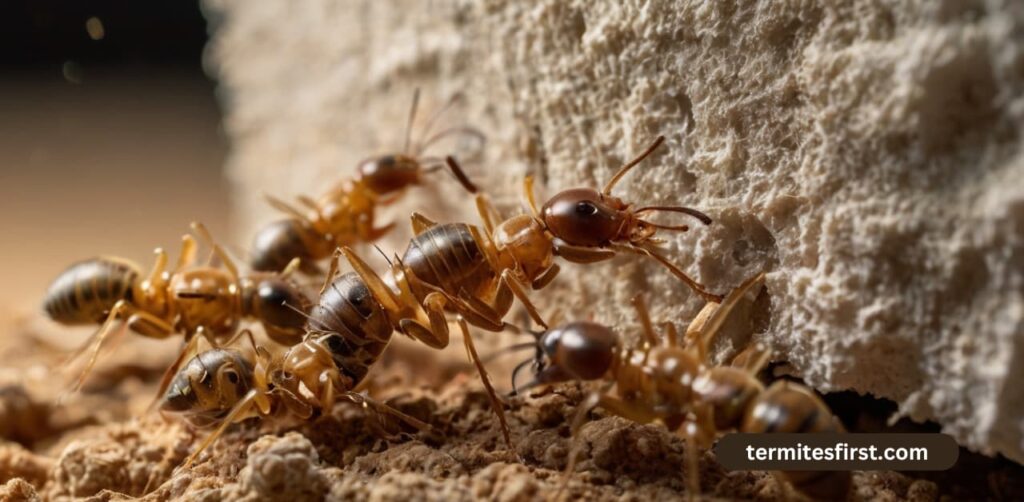
Once termite discoloration is detected, it is best to be on the lookout for additional signs of infestation to catch the issue quickly and efficiently.
Bubbling or Flaking Paint
In addition, bubbling or flaking paint is a good sign that there is moisture or termite damage underneath. Termites typically eat wood and other materials behind drywall, causing this condition.
Homeowners should be sure to closely examine these areas for further termite evidence. Taking care of paint problems right away stops additional drywall damage, helping maintain your home’s condition and value.
Mud Tubes and Tunnels
Termites create mud tubes as protective structures for travel and feeding. These tubes typically appear along walls or foundations, signaling active infestations. Spotting mud tubes helps pinpoint concern areas during inspections.
Documenting their presence aids pest control experts in evaluating and tackling the problem effectively.
Cracks on Wall Surfaces
Visible cracks on wall surfaces can be a clear indicator of structural damage due to termite activity. As termites eat through wood, they make supporting joists and beams weaker, which causes drywall to crack.
Keeping a close eye on these cracks to track any change over time is critical, as it can be a sign of increasing termite activity. Getting an expert opinion if large cracks develop will help you deal with the issue the right way.
Accumulation of Termite Dust
Termite droppings, known as frass, commonly collect around infested areas. This powder, created from termites boring through wood, looks like tiny wood shavings. Inspecting for frass should become a regular part of your inspection process.
If you notice unusual piles of dust, particularly along baseboards or wall seams, you should take a closer look.
Unusual Noises from Walls
Soft clicks or crinkling sounds coming from your drywall are a sign that termites have moved in. Soldier termites banging or worker termites eating can produce these noises.
Homeowners should be most observant at night when the home is most quiet. Taking the time to investigate those odd sounds can uncover an active infestation that needs immediate attention.
Initial termite damage in drywall may look similar to water damage, such as bubbling or peeling paint. Another sign of termites in drywall are tiny pinholes.
Subterranean termites tend to pack these openings with soil, but Drywood termites do not. Drywall, which is composed of gypsum, is very susceptible to termite damage, since termites can eat through the drywall paper, destroying it in the process.
That’s why managing termite risks proactively through annual inspections is key, since termites cause billions in damages to U.S. Homes every year. Drywood termites consume at a slower rate, taking up to three weeks to be killed by Boric Acid.
Backed by a 9.6/10 TrustPilot score, termite control services guarantee you’ll be a happy customer.
Consequences of Undetected Termite Damage
These silent destroyers can cause significant damage in homes, often going undetected until it’s too late. Below, I discuss the extensive consequences of undetected termite infestations and why immediate treatment is essential.
Structural Integrity Issues
Termites, with their love of all things cellulose, are capable of doing extensive damage to the structural components of walls and ceilings. They burrow into drywall, particleboard, and other structures that form the backbone of our homes.
As these materials fail, sagging or even collapsing portions of the home become a very real threat. In the U.S., termites infest more than 600,000 homes every year, causing upwards of $5 billion in damages. Without detection, this constant movement can cause serious structural issues.
Acting quickly to treat a termite infestation is key. Routine inspections are not only suggested, but required to ensure the safety of the building.
Financial Costs of Repairs
The monetary cost of fixing termite damage is equally significant. It’s easy to forget, but termites inflict about $5 billion in damage to American homes each year.
Repair costs soar when infestations go unnoticed, because termites eat around the clock without any outward or near-immediate symptoms. That’s one kind of damage that homeowner’s insurance usually doesn’t cover.
Repairing structural and material breaches is hard on any budget. In order to prevent these costly surprises, regular termite inspections are an essential step in all homeowner’s routines. Taking prevention measures is a smart way to avoid the expensive damage repair costs in the future.
Impact on Property Value
In fact, termite damage can lower a property’s market value by 25%. When there are visible signs of damage, or a history of infestations exist, prospective buyers become skittish or seek a discount.
Protecting property investment is crucial. The single most important factor in protecting property investment is a pest-free environment.
During real estate transactions, it’s a good idea for the current owners of a home to disclose any history of termite damage. Full disclosure up front creates goodwill and trust and minimizes surprises later during appraisals or sales.
Health and Safety Concerns
The health and safety implications associated with termite infestations are alarming. Structural failures due to compromised walls and ceilings create dangers to inhabitants.
They can cause dangerous structural conditions that can make any place unsafe to live. Taking care of termite issues is necessary to provide the healthiest living space possible.
It’s always best to consult with pest control professionals for the most effective treatment options. They’ll be able to offer the most customized plan to get rid of these unwanted pests and get your home—and your mind—back to normal.
Repairing Termite-Damaged Sheetrock
Repairing termite damage to sheetrock can turn into a very expensive mistake if you hesitate. You can’t always see subterranean termites right away. These pests feed on the paper on drywall, and one day turn a small problem into a costly disaster overnight.
It’s important to take a methodical treatment to both fix what’s clearly been damaged and to avoid future termite incursions.
Assessing the Extent of Damage
Before diving into home improvements, it’s important to first evaluate how deep the damage goes. This step guarantees that you’re fixing every area that’s been affected and preventing any future issues from arising. Knowing how to determine which areas of the sheetrock should be replaced and which can be salvaged and reused is crucial.
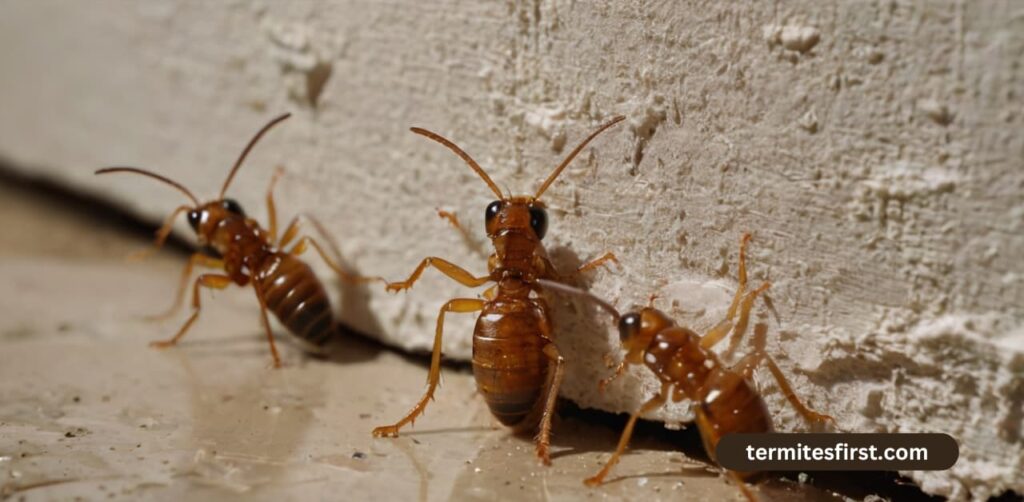
Signs to watch out for include hollow-sounding walls or visible mud tunnels. Additionally, do not ignore nearby materials like wall studs, as termites frequently extend their damage beyond just the sheetrock. Taking the time to document your findings and potential solutions can inform your repair efforts and serve as a reference for future inspections.
Steps for Repairing Drywall
Here’s a detailed guide to repairing drywall compromised by a possible termite infestation.
- Begin by thoroughly inspecting the sheetrock and surrounding areas to identify all affected sections.
- Carefully cut out the damaged drywall to prevent further harm. To achieve a clean cut, you may want to use a utility knife or drywall saw.
- Install new drywall panels securely in the sections you’ve removed. Use wood glue and screws to make the piece fit tightly in order to keep the wall structure sound.
- Finish and paint the repaired area: Tape and finish the seams to create a smooth surface. After the mud has set, sand it even with the surrounding surface, and then repaint that patch to resemble the rest of the wall.
When to Contact Professionals
There are times where professional help is needed. If you face major damage and huge infestations, consulting pest control professionals is the best option. They carry the experience necessary to properly handle the worst cases.
Only by having an expert inspect the damage can you get a reliable estimate of damage and be assured that all affected areas are repaired. Scheduling regular inspections with your licensed termite specialist is another good way to stave off future damage.
For long term prevention, think about having one of our skilled professionals do a yearly inspection.
Termites, particularly drywood and subterranean varieties, are a different animal. Although drywood termites aren’t very aggressive feeders, subterranean termites prefer dark, moist environments and are very fast eaters.
Keep decorative mulch 15 feet away from your home’s foundation. Further, keep woodpiles 20 feet away and elevate them five feet in the air to keep pests away.
Conclusion
Termites eat sheetrock. They then chew through the paper backing and the gypsum inside. Leaving them unchecked can create serious issues for your house. Listen for signs such as hollow sounds or small pinholes. If you see signs of termite damage, respond quickly. Repairing this damage goes beyond a simple drywall patch. It protects your home from being unsafe and unsound. Watch for blistering walls, and don’t let termites chew away your peace of mind. With vigilance and swift action, you can safeguard your investment and keep your home a fortress. If you’re ever in doubt or need assistance, speak with a professional. Your home’s continued good health is well worth it. So let’s go out and keep it termite-free!
Frequently Asked Questions
Yes, termites can eat through sheet rock, compromising the structural integrity of the drywall. This can lead to serious damage if a termite problem is not addressed promptly, highlighting the importance of a regular termite inspection.
Signs to look out for include small pin-sized holes, hollow sounds when tapped, or sagging areas in the plasterboard. Additionally, look for wings shed by termites or termite feces in the area.
Undetected termite damage, especially from subterranean termite colonies, can often weaken the structural integrity of your home, leading to significant damage and costing homeowners thousands in repairs.
Small damage to sheet rock may be repairable with patching kits, but when the damage is serious, it usually requires the care of a termite control provider to ensure your home is structurally sound and that the destructive pests can’t return.
They’re capable of causing thousands of dollars in damage in as little as three months due to possible termite infestations. Their uncontrollable eating habits can quickly lead to significant damage to your home’s structure.
With regular termite inspections and a focus on keeping things dry and well-ventilated, you can effectively keep termites at bay. Using termite-resistant materials like plasterboard during construction is a smart approach to preventing possible termite infestations.
